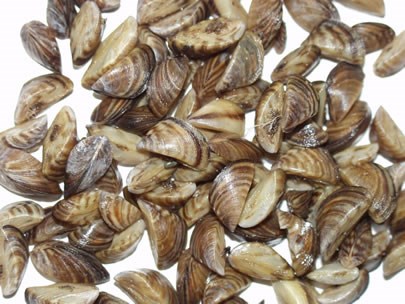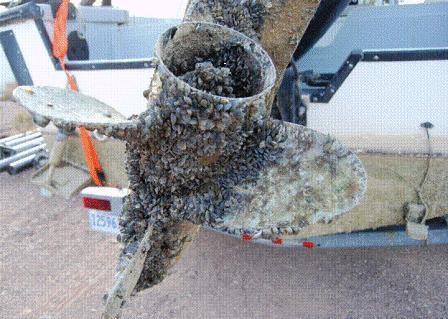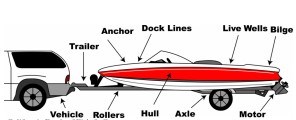|
Invasive Species Over 6,500 non-native invasive species have been documented on park lands. Invasive species are plants, animals and pathogens that are non-native to an ecosystem. They are likely to cause harm to the ecosystems they invade. Two aquatic species that threaten the water and ecosystems of the Missouri National Recreational River are the zebra mussel and the Asian carp. 
HAFE NPS Photo Don't Move a Mussel!What are they?Zebra mussels are small, two-shelled clams, typically 3/8 to 3/4 inches long, that can grow up to two inches (5 cm) in length. Light and dark bands give the D-shaped shell a zebra-striped appearance. They produce a tuft of fiber known as byssal threads that allow the adults to attach to hard surfaces. Adults often attach to vessels in large clusters, like branches. Immature zebra mussels, called veligers, are microscopic larvae that float in the water with the current. Where do they come from?Zebra mussels are native to southern Russia. Ships transported them in their ballast water from Europe to the Great Lakes where they spread rapidly. First found in 1988, in Lake St. Clair near Detroit, zebra mussels have spread throughout the Great Lakes and Mississippi River drainages by commercial and recreational boats. The size and growth of infestation in the U.S. and Canada is much greater and more severe than in Europe. The predators and diseases that control zebra mussels in southern Russia are not found in any numbers in North America. 
Why are they an invasive species?The zebra mussel is well adapted for explosive population growth and concentrates in large numbers. Their presence can starve or smother native mussels. Nationwide, native mussels are the most imperiled group of animals, and are declining at an alarming rate. Zebra mussels are accelerating this decline. They consume significant amounts of plankton, altering the available food on which fish and wildlife depend, including the paddlefish native to the Missouri River. Zebra mussels can damage boat engines, docks, and breakwaters. They can also clog water intake systems of industries, power facilities, and engine outdrives, causing expensive shutdowns, repairs and replacement of treatment systems. They have interrupted the flow of drinking water to entire communities. 
What are we doing?Zebra mussel adults and veligers cannot move upstream against the current without human assistance. Public and private interests at the federal, state, and local levels formed a consortium in 2004 whose purpose is to attempt to forestall the spread of zebra mussels along the Missouri River. Park staffs monitor the river for these aquatic hitchhikers and educate the public about the importance of preventing zebra mussel infestations. The future?At this time there are no methods for eliminating zebra mussels once they establish a reproducing population. Some native species, such as ducks and fish, eat the mussels, but not in enough quantities to limit the spread. Scientists are looking for ways to reduce or eliminate zebra mussel populations. 
California Dep't of Fish & Game What You Can Do to HelpVisual Inspection and Removal Be on the Lookout!If you find zebra mussels in the Missouri River or if you would like more information, please call Missouri National recreational river at 605-665-0209. Asian CarpSilver and Bighead (Asian) Carp, AKA silverfin - These plankton feeders were imported to clear the water in aquaculture and settling ponds. Escaped, they have flourished and spread, taking resources form native species. They have become popular targets for bowfishing and, as an entirely different species from the common grass carp, are excellent eating. |
Last updated: September 10, 2021
